Singapore's celebrity urban otter family
- Published
Watch: Singapore's famous furry family
They're known as the Bishan 10 - and they're possibly Marina Bay's most famous residents.
They've starred in a David Attenborough documentary, external, and their affairs frequently make the local news. Facebook groups, external are dedicated to them, and academics study them, external.
They're a family of ten smooth-coated otters, and like many celebrities, they exude an aura of mystery, occasionally making an appearance to the delight of their many local fans. Like true stars though, when they do show their faces, they're extremely comfortable in front of the camera.
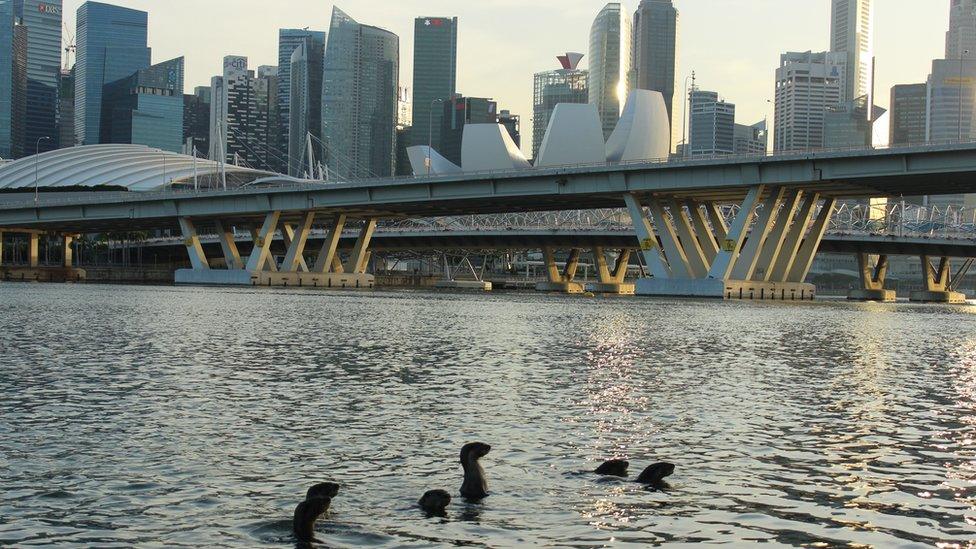
The otters stare at the bank, where out of shot, a crowd is watching them
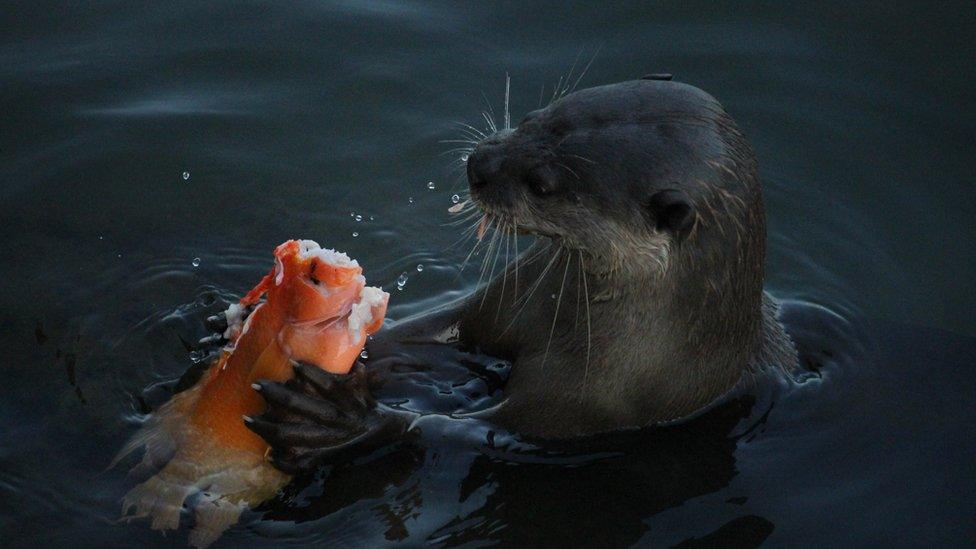
This otter family live around Marina Bay, the heart of Singapore's CBD
Perhaps unsurprisingly, these urban otters don't seem to mind the crowds of humans that inevitably gather to watch them frolic around in the water, or chomp their way through an unfortunate fish's head.
(On which subject, Singaporean otters seem to have expensive tastes - local media reported back in February that otters were suspected of having eaten more than $80,000 worth of ornamental koi carp on Sentosa, a resort island just off Singapore.)
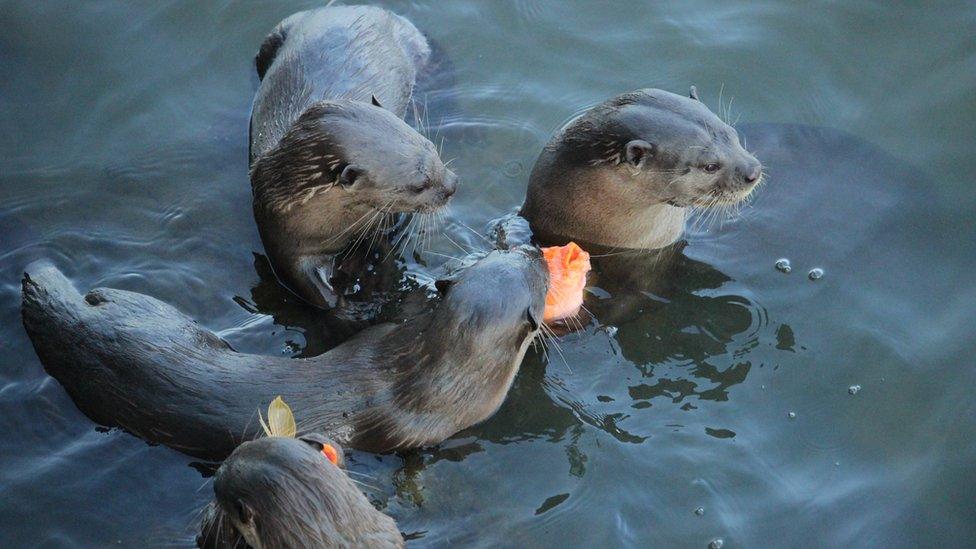
The otters usually begin their evening antics with a fish supper
It's difficult to imagine that in the 1970s smooth-coated otters were thought to have vanished from Singapore.
Now their resurging numbers are seen as a sign that the island's waterways are becoming cleaner, and last week "Ottie the Otter" became the official mascot of an island-wide conservation movement backed by the government.
"The otter is a particularly pertinent reminder of the need to continue preserving our environment so that we do not lose these beautiful creatures again," said a spokesman at the project launch.
Fittingly, the 13th International Otter Congress, external is taking place in Singapore this week, with the theme Otters and People.
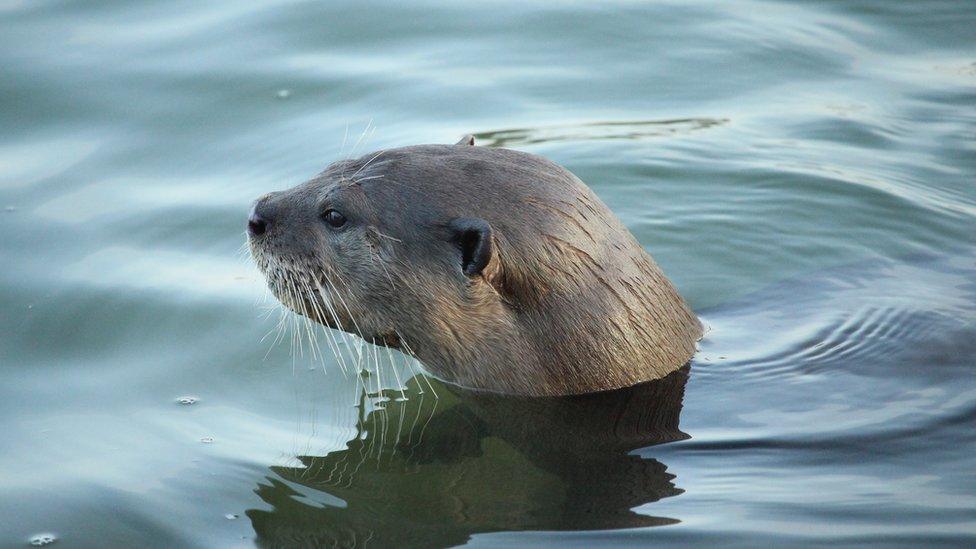
One of the Bishan 10 otters looks around for the rest of the family
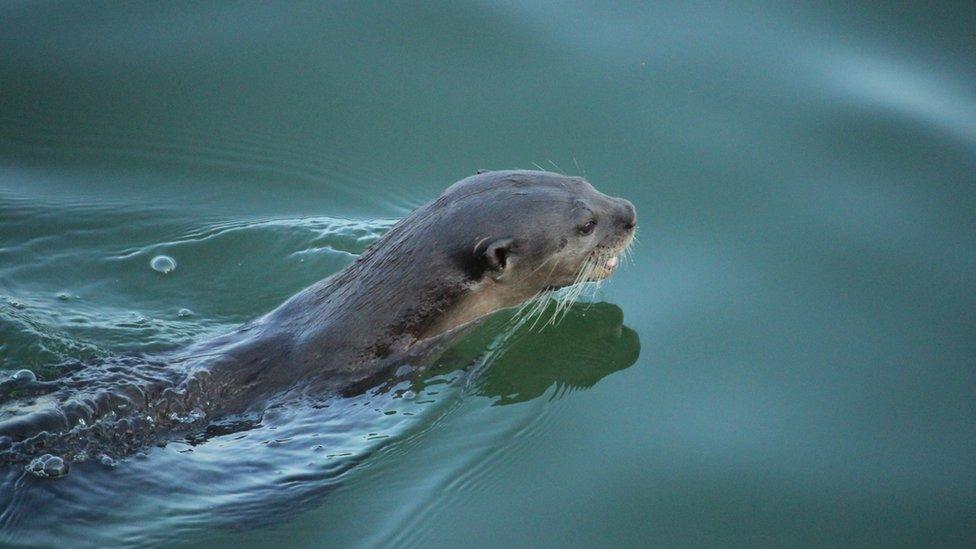
There are two species of otter native to Singapore; the Bishan 10 are smooth-coated otters
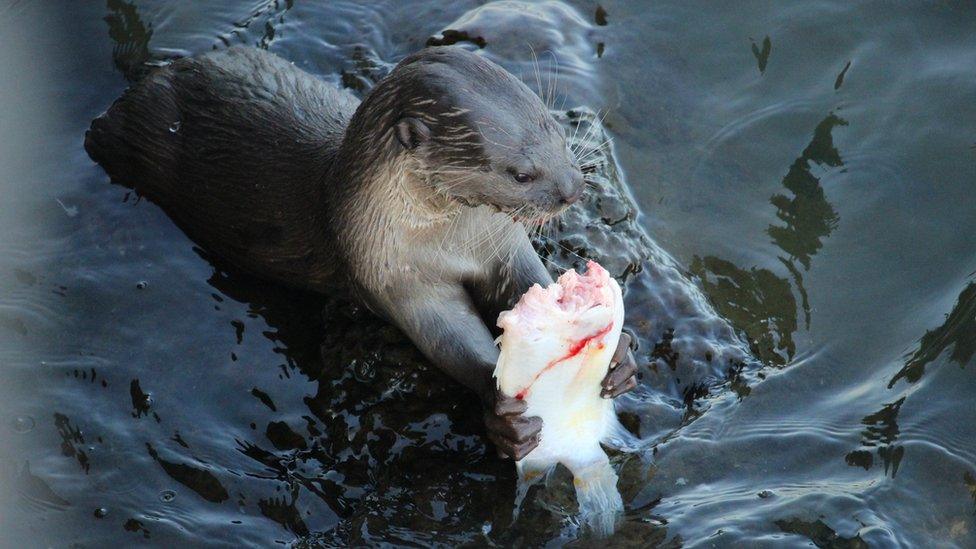
In the 1970s, otters were thought to have vanished from Singapore

Diary of an otter-spotter
The otters usually appear at about 17:30 in the evening. They don't always appear in the same place though, as I've found on many a frustrating occasion. I often meet others on the hunt for them, and we share stories about where we saw them last.
When you do find them, you get a proper show. They always seem to follow a similar pattern of behaviour. First they'll catch some fish, and proceed to happily tear them to pieces and devour them, either on the shore or in the water.
After dinner, they start to play, chasing each other around in the water - they remind me of a mixture between a dog, a cat and a seal. I've been reading up, and I know that most of this family is quite young - people think the smallest five were only born in December. Sometimes one of them gets separated from the group and mewing piteously, scrambles to catch up.
After about half an hour of this, and just as twilight begins to settle in, they'll scramble up the bank (cue lots of screaming from walkers taken by surprise), find a bit of bare earth, and start to roll around until they're coated in fine sand. A bit more frolicking, and then suddenly, just like that, it's time to go - they vanish down into the water, or under a bridge, in the space of a minute or two.

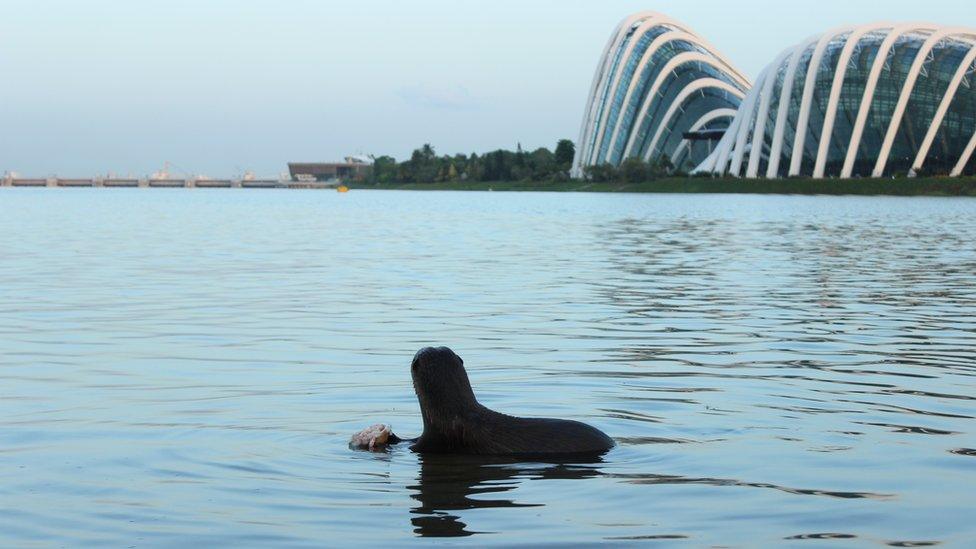
The otters appear in the early evening, and stay until darkness falls
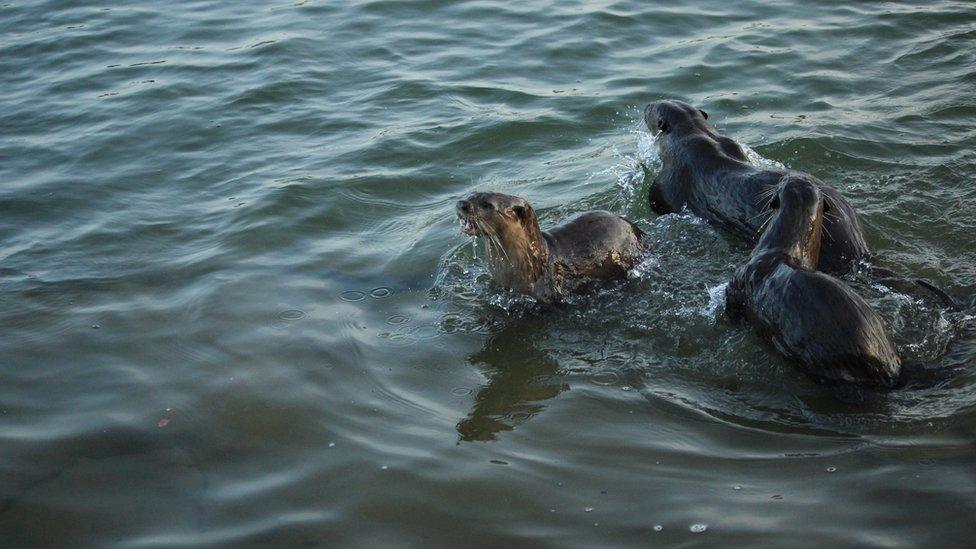
After eating, the otters often play about in the water
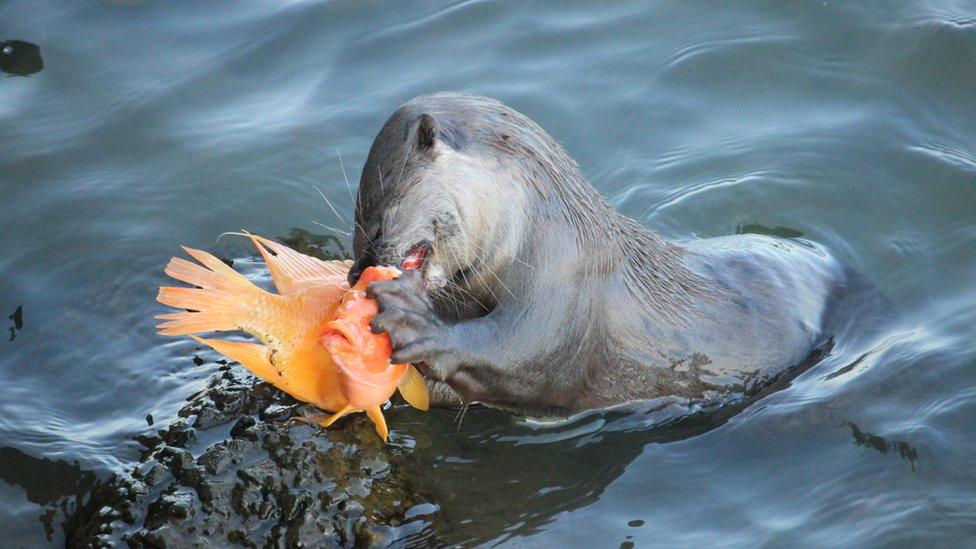
People are advised not to feed the otters - they are quite capable of catching their own food
Interest in Singapore's otters is growing, according to OtterWatch, external, an informal Facebook-based community with links to the National University of Singapore, and recently the otter-watching community's vigilance proved vital in a rescue.
In May, a six-week-old pup named Toby nearly drowned when he fell off a ledge - he was rescued by a 60-year-old retiree who dived in to save him.
OtterWatch members noticed the adult otters had not gone back for him and raised the alarm. The pup was rescued again, and the next day was reunited with his family.
Generally though, the National Parks Board of Singapore advises that when encountering otters, it's best to stay at a distance, keep quiet and avoid flash photography.
They also advise people not to feed them, but as these photographs show, they have no problem catching their own fish.